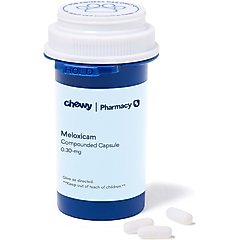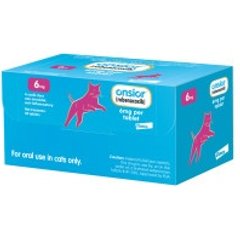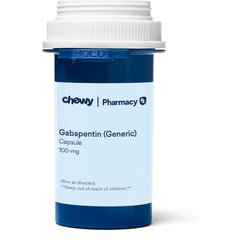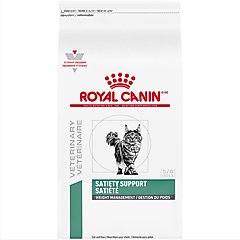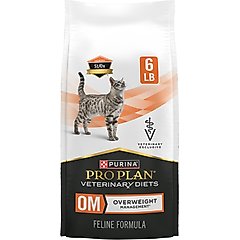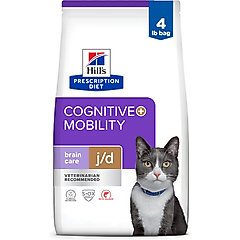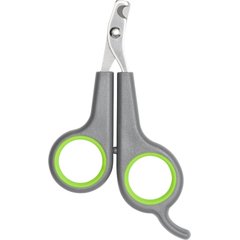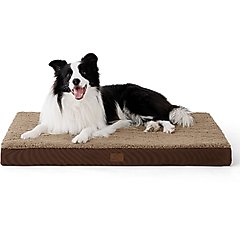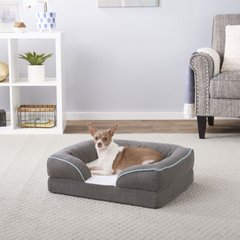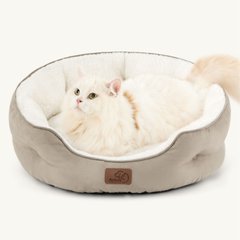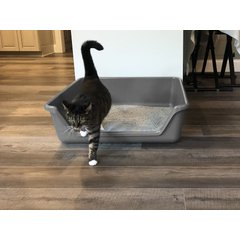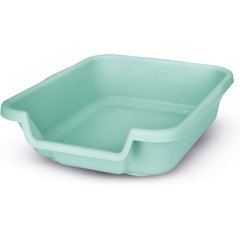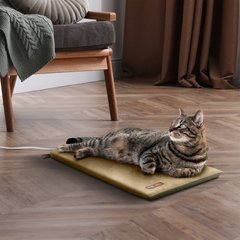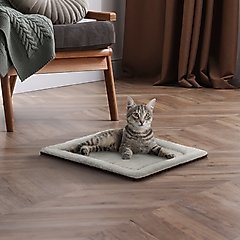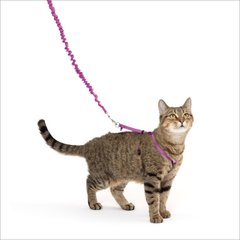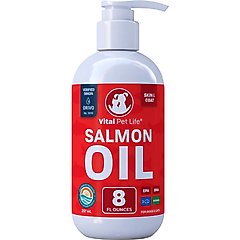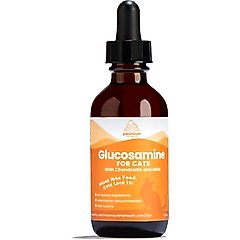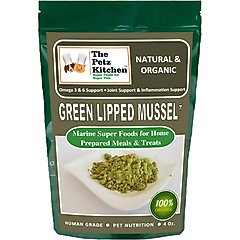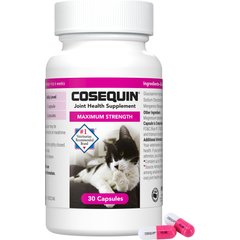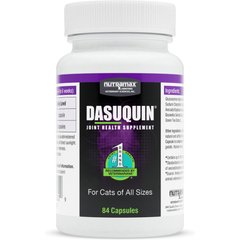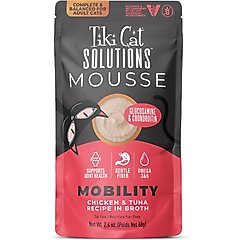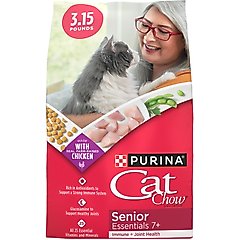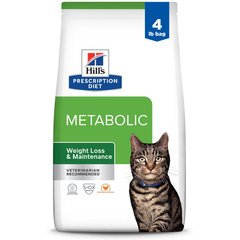What Is Arthritis in Cats? What Are the Signs?
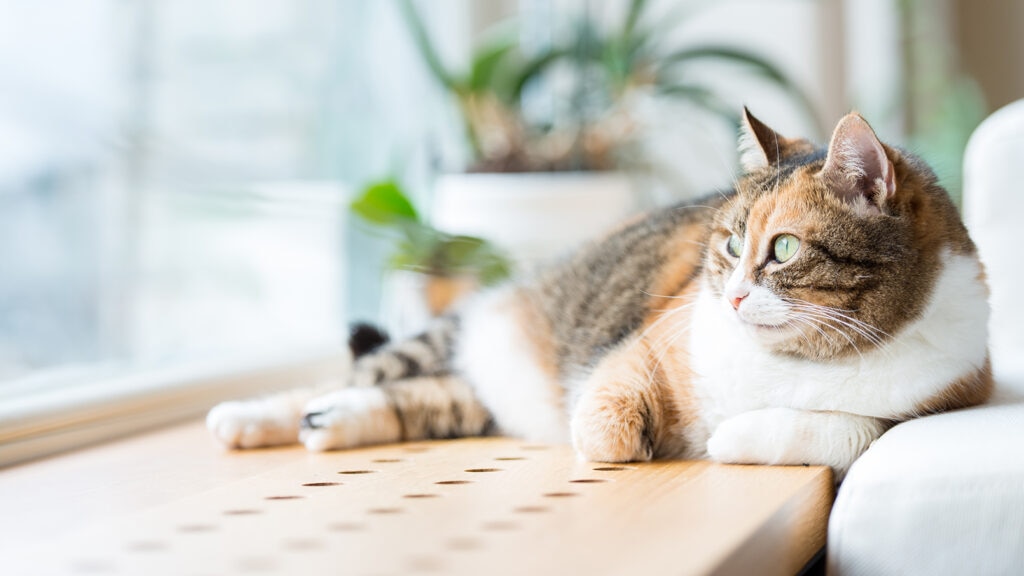
Photo by AzmanL/E+ via Getty Images
Have you noticed your cat hesitating to jump, play, or sleep in their usual positions? Subtle changes like these can be signs of arthritis in cats, especially in older cats.
To get the full scoop on cat arthritis, we spoke with two veterinarians about the signs to watch for, what causes arthritis in cats, and the best ways to keep your arthritic kitty comfortable and active.
Key Takeaways:
- Arthritis is a common condition in cats, especially in seniors, characterized by joint inflammation and stiffness that can affect mobility and behavior.
- Signs are often subtle and include hesitancy to jump, stiffness, changes in grooming habits, and mood shifts.
- Remedies typically involve a combination of treatments, including pain medications and joint supplements; and lifestyle adjustments, including easier access to food, litter boxes, and comfortable resting areas.
- While arthritis can’t be cured, proactive care—like maintaining a healthy weight and encouraging gentle activity—can help manage symptoms and improve your cat’s quality of life.
What Is Arthritis in Cats?
Arthritis in cats is a condition characterized by inflamed, stiff, and painful joints, which makes it difficult for cats to move around comfortably.
The most common form of arthritis is osteoarthritis (aka degenerative joint disease), which occurs when the cartilage that cushions the joints wears down over time. Without that cushion, bones rub together, leading to pain, swelling, and decreased mobility.
Osteoarthritis in cats is surprisingly common, especially in older kitties. Research suggests that 90% of cats over the age of 12 show signs of arthritis on X-rays, even if they don’t all show obvious symptoms.
What Are the Signs of Arthritis in Cats?
Cats tend to hide their pain, so the signs of arthritis can be easily missed. You might not see a dramatic limp or hear them cry out, but you may notice subtle changes in how they move, rest, and interact.
Symptoms of arthritis in cats may include:
- Hesitation or difficulty jumping onto furniture or climbing stairs
- Stiffness or limping, especially after resting
- Less interest in play or exploring their usual spots
- Changes in grooming habits, often grooming less or missing spots
- Irritability or changes in mood
- Sleeping more or choosing easier-to-reach resting spots
- Litter box issues, such as accidents or avoiding the box due to difficulty getting in and out
What Causes Arthritis in Cats?
Several factors can contribute to or speed up the development of arthritis in cats. According to Gary Dattner, DVM, CVO, of Tandem Vet Care, a virtual and mobile vet clinic that serves the greater Boston area, the top contributing factors include:
- Aging: Joint cartilage naturally wears down over time.
- Joint injuries: Injuries like sprains or ligament tears can lead to arthritis later in life.
- Joint abnormalities: Conditions like hip dysplasia or luxating patella (loose kneecaps) can cause uneven stress on joints.
- Obesity: Extra weight puts additional strain on joints, increasing the risk of arthritis.
- Genetics: Some cats may be genetically predisposed to joint issues that lead to arthritis.
- Infection or inflammation: Though rare, certain infections or inflammatory diseases can damage joint tissue.
Are Some Cats More at Risk?
According to Dr. Dattner, certain cats are more likely to develop arthritis, including:
- Senior cats, as joint wear and tear increases with age
- Certain breeds like Maine Coons, Siamese, Scottish Folds, Himalayans, and Persians
- Cats with previous injuries that may have affected their joints
- Overweight cats, because extra pounds put added strain on the joints
- Less active cats, as lack of movement can lead to joint stiffness over time
How Do Vets Treat Arthritis in Cats?
Managing arthritis in cats starts with a proper diagnosis. To determine if your cat has arthritis, Dr. Dattner says your veterinarian may use the following methods:
- Medical history: You’ll be asked about changes in your cat’s behavior, mobility, and energy level.
- Physical exam: A vet may feel for joint swelling, stiffness, or signs of pain when flexing or extending your cat’s limbs.
- X-rays: This form of imaging helps confirm arthritis by revealing joint changes, bone spurs, or cartilage loss.
Once diagnosed, your vet will recommend a tailored cat arthritis treatment plan. While arthritis is not curable, Dr. Dattner says a multi-faceted treatment approach can often help your cat live comfortably.
The most common treatment approaches include:
- Joint supplements: Certain supplements may help support joint health and reduce inflammation (more on this below).
- Pain medication: Non-steroidal anti-inflammatories (like meloxicam and Onsior) can help relieve pain and inflammation. Gabapentin and opioids may also be considered.
Recommended Products
- Injections:
- Solensia is a prescription injection that is FDA-approved in cats for the relief of pain associated with arthritis. This monoclonal antibody (lab-made protein) works by blocking pain signals to your cat’s brain.
- Adequan is a prescription injectable that helps protect joint cartilage by blocking enzymes that break it down. While it’s not currently FDA-approved for cats, some veterinarians use it off-label.
Recommended Product
- Weight management: Maintaining a healthy weight reduces stress on joints and can significantly improve mobility.
- Prescription diets: Some prescription diets—like Royal Canin Veterinary Diet Adult Satiety Support, Purina Pro Plan Veterinary Diets OM Overweight Management, and Hill’s Prescription Diet Brain Care + j/d Joint Care—contain ingredients that support joint health or weight loss.
Recommended Products
- Surgery: In severe cases, surgical options, including joint fusion, joint replacement, and amputation, may be recommended to improve mobility and quality of life.
How Can I Help Manage My Cat’s Arthritis at Home?
While your vet will guide the medical side of treatment, there’s plenty you can do at home to provide comfort and arthritis relief for your cat.
Make Essentials Easy to Access
Cats with arthritis often have a harder time getting around, so it’s important to make their everyday essentials more accessible.
Keep their food, water, and litter box on the same level of your home to avoid excessive stair climbing. And if your cat loves perching on the couch or windowsill but can’t jump like they used to, add ramps or steps to help them get there without strain.
Look for carpeted ramps or stairs, like the Frisco Deluxe Wooden Carpeted Ramp or Best Pet Supplies Corduroy & Foam Stairs.
Recommended Products
Trim Your Cat’s Nails Regularly
Cats with arthritis do not wear down their claws naturally, and if your cat’s nails are allowed to grow too long or curved, they may catch and break, or even grow into your cat’s nail pads, resulting in pain and injury.
To trim your cat’s nails, use a nail clipper, like Frisco Nail Clippers, or a nail grinder, like PATPET Steel Grit Nail Grinder.
Recommended Products
Provide Soft, Comfortable Bedding
Resting on hard surfaces can be painful for cats with arthritis. Provide your kitty with an orthopedic or memory foam bed, which will cushion pressure points.
Choose beds that are easy for them to get in and out of, such as the Bedsure Orthopedic Bed with Sherpa, the Frisco Plush Orthopedic Front Bolster Bed, and the Bedsure Round Orthopedic Bolster Bed.
Recommended Products
Switch to an Easy-Access Litter Box
High-sided litter boxes can be difficult for arthritic cats to enter and exit. Swap in low-entry boxes, like the KittyGoHere Senior Cat Litter Box or the Shirley K’s Senior Cat Litter Box.
Recommended Products
Place litter boxes in multiple areas of your home for convenience.
Keep Them Warm
Warmth can soothe sore joints. If your home tends to get chilly, consider a heated cat bed or self-warming mat.
Good options are the K&H Pet Products Thermo-Kitty Mat and the K&H Pet Products Self-Warming Pad.
Recommended Products
Encourage Gentle Movement
Even if your cat isn’t as active as they used to be, encouraging gentle movement can help maintain joint flexibility.
Try dragging a wand teaser toy, like the Pet Fit For Life 2 Feather Wand Cat Toy, along the ground at a slow pace to encourage your cat to engage in low-impact play.
Recommended Product
Also consider training your cat to wear a harness and leash for fun, relaxing supervised outdoor time. This provides light activity plus mental and environmental enrichment.
A great harness and leash bundle is the PetSafe Come with Me Kitty Harness & Bungee Leash.
Recommended Product
Try Joint Health Supplements
With your vet’s approval and guidance, adding a joint supplement to your cat’s routine may help support mobility and reduce inflammation. Veterinarians generally recommend:
- Fish oil supplements, such as Vital Pet Life Salmon Oil, are a natural source of omega-3 fatty acids that may help reduce joint inflammation.
Recommended Product
- Glucosamine supplements, such as Paramount Pet Health Glucosamine, support cartilage health and may slow joint degeneration.
Recommended Product
- Chondroitin, which is often paired with glucosamine in supplements, helps maintain joint structure and fluid.
- Green-lipped mussel extract is a marine-based supplement rich in omega-3s and other nutrients that support joint health and reduce stiffness. One popular option is The Petz Kitchen Green Lipped Mussel Supplement.
Recommended Product
Some supplements, such as Nutramax Cosequin and Nutramax Dasuquin, combine multiple joint-supporting ingredients into a single supplement, as they’re designed to work better together than individually.
Recommended Products
Additionally, some cat foods, such as Tiki Cat Solutions Mousse Mobility Grain-Free Wet Cat Food and Purina Cat Chow Senior Essentials 7+ Immune + Joint, are formulated with joint supplements.
Recommended Products
Maintain a Healthy Weight
Extra weight puts added stress on your cat’s joints, which can make arthritis symptoms worse. Helping your cat reach and maintain a healthy weight is one of the most effective ways to ease their discomfort and support mobility.
Ask your vet about your cat’s body condition and ideal weight and if they could benefit from weight management cat food, such as Hill’s Prescription Diet Metabolic Chicken Flavor Dry Cat Food, which is formulated to help kitties safely shed excess pounds.
Recommended Product
Create a Calm, Predictable Environment
Cats with arthritis benefit from stability and routine.
Try to keep furniture, litter boxes, and beds in the same place so your cat doesn’t have to relearn their layout.
Avoid loud noises and sudden changes that could cause stress or startle them into making sudden, painful movements.
How Can I Prevent Arthritis in My Cat?
While there is no guaranteed way to prevent arthritis in cats, these steps may reduce your cat’s risk:
- Maintain a healthy weight. According to Dean Vicksman, DVM, president of EveryCat Health Foundation in Wyckoff, New Jersey, this is the most important factor. “Extra pounds put extra stress on their joints, which adds up over time,” he says. “It’s one of the simplest and most effective ways to protect their mobility long-term.”
- Start joint supplements early. Introducing joint-supporting supplements, like glucosamine, chondroitin, or omega-3s, before symptoms appear may help support joint health as your cat ages.
- Encourage regular play. “Keeping them active also plays a key role,” Dr. Vicksman says. “Gentle, daily play helps maintain muscle tone and joint flexibility, both of which are essential for long-term joint health.”
- Keep up with vet checkups. Routine wellness visits help your vet monitor mobility, catch early signs of joint changes, and recommend proactive care if needed.
FAQs About Cat Arthritis
Q: How long will a cat live with arthritis?
A: Arthritis itself isn’t life-threatening, and many cats live comfortably for years with proper management.
Q: What is the best joint supplement for cats with arthritis?
A: Popular vet-recommended options include Nutramax Cosequin and Nutramax Dasuquin. Look for supplements containing glucosamine, chondroitin, omega-3 fatty acids, and green-lipped mussel extract.
Always consult your veterinarian before starting any supplement.
Q: Can arthritis in cats be cured?
A: No, arthritis is a chronic, progressive condition, and there is currently no cure. However, it can be managed effectively with medication, joint supplements, weight control, and environmental modifications.
Q: Should I change my cat’s diet if they have arthritis?
A: Possibly. Your vet may recommend a joint-supportive or weight-management formula to reduce inflammation and relieve pressure on the joints.
